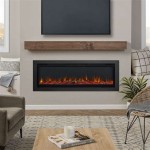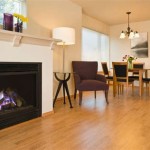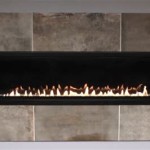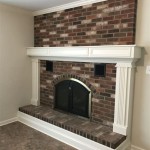Gas to Wood Fireplace Conversion Cost: A Comprehensive Guide
Converting a gas fireplace to a wood-burning one can be a significant undertaking, both in terms of time and money. This process involves more than just swapping out the burner and adding a firebox. It necessitates a careful assessment of your existing fireplace structure, potential safety considerations, and adherence to local building codes. Understanding the costs involved is crucial for making an informed decision about whether this conversion is the right choice for you.
Factors Influencing Conversion Cost
The cost of converting a gas fireplace to wood-burning is a variable factor, influenced by several key elements:
- Existing Fireplace Structure: The foundation of the conversion process lies in the suitability of your current fireplace. If your existing fireplace is already designed for wood-burning with a robust firebox and chimney, the conversion process will be relatively straightforward and less expensive. However, if your existing fireplace is intended for gas-only use, extensive modifications might be required, significantly impacting the cost.
- Location and Accessibility: The location of your fireplace and its accessibility can influence the cost. If the fireplace is situated in a hard-to-reach area, labor costs may increase due to the need for specialized equipment and additional labor time.
- Materials and Labor: The materials required for the conversion, including the firebox, damper, and chimney components, will directly impact the overall cost. The quality of materials and the complexity of installation will determine the cost of labor as well.
- Local Building Codes: Building codes vary from region to region, and compliance with these codes is crucial for ensuring a safe and functional fireplace. Meeting specific code requirements might necessitate additional work or specific materials, which can influence the total cost.
Conversion Process and Associated Costs
Converting a gas fireplace to a wood-burning one involves a series of steps, each contributing to the overall cost:
- Firebox Installation: The firebox is the heart of a wood-burning fireplace, and its installation is a significant part of the conversion process. The cost of the firebox itself will vary based on size, material, and brand. Installation labor costs will also depend on the complexity of the installation and the accessibility of the fireplace.
- Chimney Inspection and Modifications: A thorough inspection of your existing chimney is essential to ensure it meets the requirements for safe wood-burning operation. If modifications are needed, such as lining the chimney, repairing cracks, or adding a chimney cap, these costs can add up quickly.
- Damper Installation: A damper is a critical component for controlling airflow and preventing backdraft in a wood-burning fireplace. The cost of the damper and its installation will vary based on the type and size required.
- Electrical Wiring (if necessary): Some wood-burning fireplaces may require electrical wiring for the ignition system or blower. The cost of this work will depend on the complexity of the wiring and the distance to the electrical panel.
- Permits and Inspections: Depending on local building codes, permits and inspections may be required for the fireplace conversion. The cost of these permits and inspections can vary by location.
Alternative Solutions: Gas Fireplace Inserts
If you're considering converting your existing gas fireplace to wood-burning, exploring alternative solutions might be a more cost-effective option. Gas fireplace inserts offer a convenient and efficient way to enjoy the ambiance of a fire without the hassle of wood-burning. These inserts are designed to fit into existing gas fireplaces and create a realistic flame effect. The cost of a gas fireplace insert is significantly lower than a full conversion, and installation is generally less complex.
Cost Considerations and Conclusion
Before embarking on a gas to wood fireplace conversion, carefully weigh the costs involved and compare them to alternative solutions. Consider the following factors:
- Long-term Costs: Consider the ongoing costs of firewood, chimney cleaning, and potential maintenance or repair. While you might save on initial gas costs, these long-term expenses should be factored into your decision.
- Environmental Impact: Wood-burning fireplaces can contribute to air pollution, so consider the environmental impact and potential health consequences of your choice.
- Lifestyle and Time Commitment: Wood-burning fireplaces require a significant time commitment for maintaining a fire, cleaning ash, and ensuring safety protocols are followed.

Want To Convert Gas Wood Fireplace Full Service Chimney
Converting A Wood Burning Fireplace Into Gas Heat Glo

What S The Cost To Convert A Wood Fireplace Gas Orange County Register

Want To Convert Gas Wood Fireplace Full Service Chimney

Wood To Gas Fireplace Conversion In Wisconsin Free Quote Badgerland Waesha

Wood Fireplaces Gas Conversion That Counts

Convert From Wood To Gas With A Insert The Kernel Burner
Can I Convert My Wood Burning Fireplace To Gas Woodlanddirect Com

2024 Cost To Convert A Wood Fireplace Gas
Can I Convert My Wood Burning Fireplace To Gas Woodlanddirect Com
Related Posts








